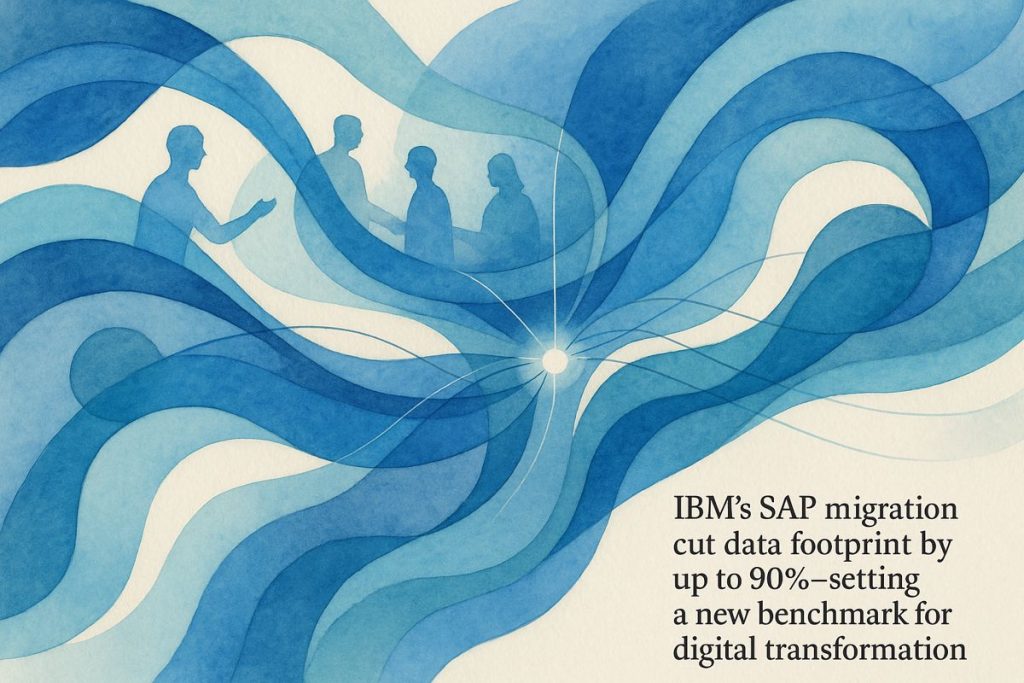IBM made a bold move by shifting its core operations to SAP S/4HANA in the cloud, modernizing for the future before old systems became unsupported. This massive migration involved 150,000 users in 175 countries and cut down loads of old data and unused custom code, making things faster and cheaper. The new system gives real-time insights and a sleek, easy-to-use interface, making work smoother for everyone. IBM’s success with this huge project is now helping other companies do the same, showing that even giant organizations can leap into the future if they plan smart and stay flexible.
Why did IBM migrate its core ERP operations to SAP S/4HANA in the cloud?
IBM migrated its core ERP operations to SAP S/4HANA in the cloud to modernize its IT infrastructure, ensure future support after SAP ECC’s 2027 end-of-support, reduce maintenance costs, streamline custom code, enable real-time analytics, and boost operational agility for 150,000 users across 175 countries.
The Sky-High Stakes of Global ERP Overhaul
Let’s be honest: most stories about enterprise IT migration are about as riveting as cold porridge. But IBM’s migration to SAP S/4HANA? That’s a different beast—think of it as a chess game played on a hyperspectral board, where every piece weighs a metric ton and the clock ticks for 150,000 users spread across 175 countries. In July 2024, after 18 months of orchestrated chaos, the dust finally settled. IBM had not only moved its core ERP operations from SAP ECC to RISE with SAP S/4HANA, but it had done so in a way that felt, dare I say, Goethean in ambition.
I remember reading the announcement while sipping what was probably my third espresso of the morning—amazed, then immediately hit by an emotion I rarely associate with technology news: envy. How did they pull off such a feat? It’s like watching a glacier pirouette.
Now, you might wonder: why does a legacy titan like IBM bother with this Herculean effort? The answer is both prosaic and profound. Modernizing IT infrastructure isn’t just about keeping up with the Zeitgeist; it’s about survival—there’s a very real ticking clock, courtesy of SAP’s planned end of support for ECC in 2027. So, IBM wasn’t just future-proofing; it was building a palimpsest for the next generation of digital business.
Inside the Machine: Complexity, Code, and Coffee
IBM’s migration strategy was more than a garden-variety lift-and-shift. This was a global “big bang” deployment—picture a world map lit up brighter than Times Square on New Year’s Eve, as all systems went live in unison. There was only a 34-hour downtime window, two hours under what was actually planned. Some may say luck, but I say it smelled like meticulous planning—and a dash of midnight panic, perhaps.
Instead of exporting every last byte of historical detritus, IBM went for a selective data migration, transferring only what had operational or regulatory value. That decision chopped their data footprint by up to 90%—no small feat when you’re dealing with petabytes. And let’s talk code: roughly 30,000 custom objects had to be re-examined, with over 320,000 lines streamlined or simply retired. I once spent a week untangling a single ABAP user-exit and nearly lost my mind. Multiply that by 30,000 and you’ll understand why I winced in empathy reading this.
Partners like SNP (yes, that’s the CrystalBridge® people) and smartShift injected both rigor and AI into the proceedings, automating much of the code remediation and risk analysis. Meanwhile, IBM’s own Rapid Move Methodology acted as both compass and safety net—part recipe book, part talisman. Was every step flawless? Of course not. IBM admitted to some early misjudgments in estimating legacy data dependencies. But, in classic engineer fashion, they iterated quickly. Bam—problem, diagnosis, fix.
Tangible Gains: From Data Diets to Strategic Agility
Here’s the part that should make CIOs everywhere sit up and take notice. IBM didn’t just trade old problems for new ones. They emerged with quantifiable benefits: project timelines to value were sliced in half, up to 60% of custom code was rendered obsolete (hello, “clean core”), and maintenance costs trended sharply downward. Real-time analytics—enabled by S/4HANA’s in-memory computing—became a daily reality, not a PowerPoint fantasy.
I once watched a finance team in a midsize company argue for hours over numbers pulled from three different legacy systems. Now imagine IBM’s scale, but with all that friction dissolved in the cloud. That’s what operational excellence looks like…or at least smells like, on a good day.
On the user front, Ignite Testing Methodology and Fiori Advisor ensured that the new Fiori interface didn’t just look snazzy but actually delivered. One project lead compared the transformation to “moving from a diesel tractor to a self-driving Tesla”—a slightly overwrought metaphor, but you get the idea. The new UI didn’t just hum; it sang.
Looking Ahead: The Transformation Suite and Industry Ripple Effects
Not content to rest, IBM took its learnings and, in March 2025, launched the IBM Transformation Suite for SAP Applications. This bundle automates technical assessments, data migration, and testing—potentially shrinking future S/4HANA migrations to as little as 90 days. That sounds almost suspiciously fast, but the methodology is sound, at least according to the whitepapers (and my own skeptical cross-checks).
And there’s more. IBM is already integrating SAP BRIM (Billing and Revenue Innovation Management) to support things like convergent invoicing and subscription-based models. In other words, they’re not just modernizing; they’re rewiring the business for new revenue streams.
Of course, the scent of innovation is always tinged with anxiety. What if other enterprises can’t replicate this playbook? What if the next SAP upgrade breaks the delicate choreography? I had to stop and ask myself: are we watching a singular event, or the dawn of a repeatable template for digital transformation? Time—and perhaps a few more headline migrations—will tell.
Lessons for the Rest of Us
In the end, IBM’s migration is less a technical blueprint than a testament to organizational nerve and intellectual horsepower. The collaboration between IBM,
